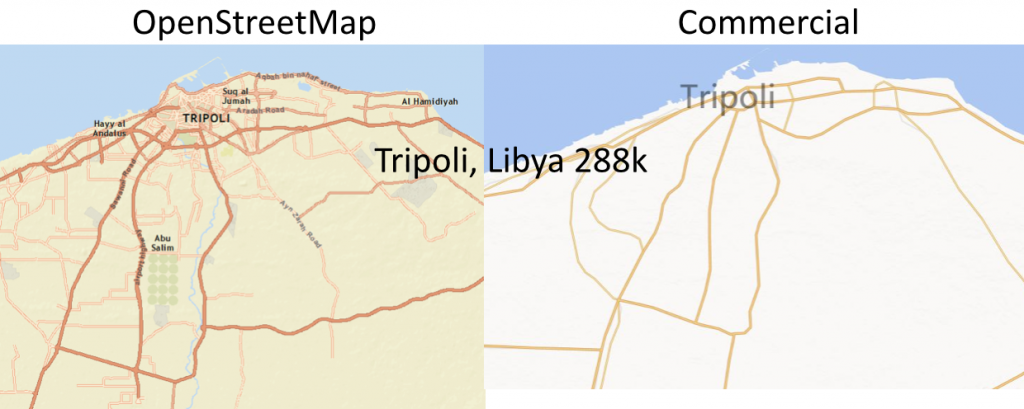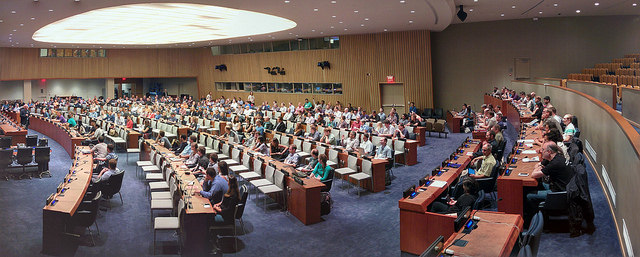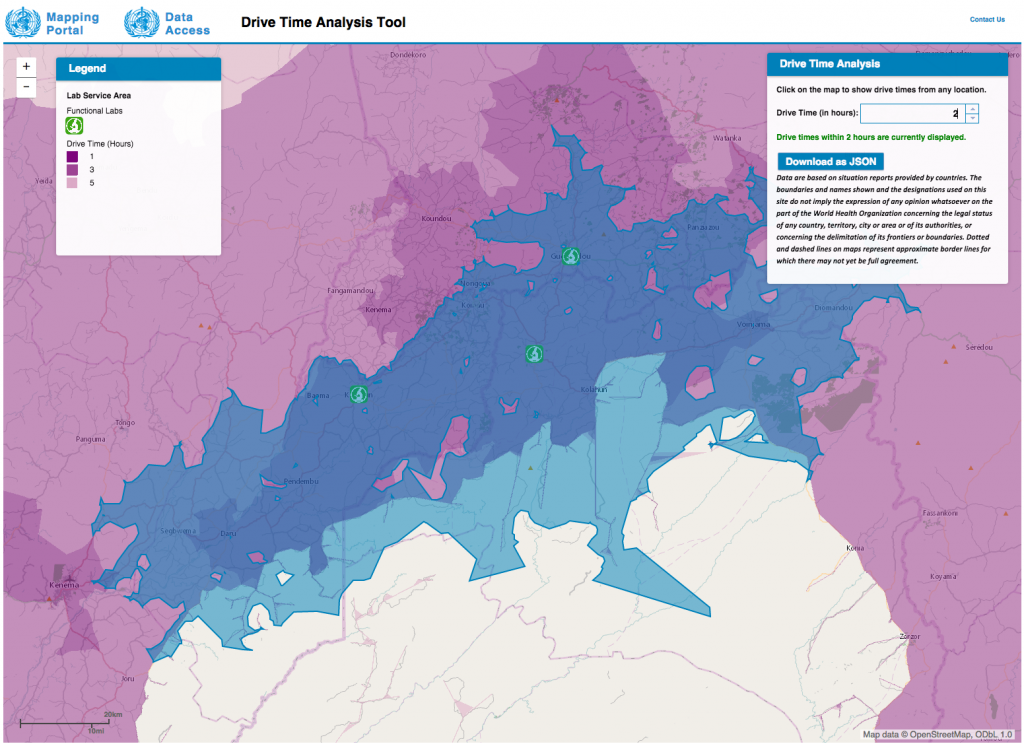Last month the United Nations headquarters in New York City hosted the 2015 OpenStreetMap US conference, State of the Map (SOTM). An illustrious setting for a passionate band of people who are collaboratively creating a global repository of geographic data that is free for anyone.
Amongst the over 800 attendees were developers, government, enterprise businesses, educators, startups, and many people just curious and interested in maps. OpenStreetMap has become well established as a source of geographic data – particularly in geographic regions that have low quality or completeness from commercial sources. Additionally OSM has up-to-date road data after a disaster and also for more esoteric but useful data such as accessibility, trails, or cycle routes. Esri has been a long-time supporter and user of OSM data so it was great to connect and share ideas in person.

Open Data in an Ecosystem
My talk highlighted the cyclic ecosystem of open data sharing. OpenStreetMap was initiated and thrives from individuals gathering observable data through GPS traces, paper maps and good ol’ groundtruthing. Increasingly, non-observable or large volumes of data such as addresses or parcels can be provided from existing data public sources – namely government! We are already seeing growing availability of data served from the local source through ArcGIS Open Data. These data sources afford an opportunity for communities like OpenStreetMap to work closely with government GIS departments to incorporate authoritative data. The result is that combining the authoritative data with the community sourced and enriched data creates unique opportunities for up-to-date and high quality sources for meaningful applications. For example the UN WHO used OSM data for routing analysis in response to the Ebola outbreak.
You can see the slides for my talk here. All of the SOTM.us talks are available via video
ArcGIS + OSM Highlights
ArcGIS Open Data will be adding structured licenses where data providers can choose from sets of well-known open licenses. This will make it easier for people to find data that fits OSM license and incorporate into the global database.
The open-source ArcGIS OSM Editor integrates into ArcGIS Desktop to download OpenStreetMap data for design or analysis. You can also edit and contribute directly to OpenStreetMap from within ArcGIS Desktop.
Koop, our open-source web API adapter, has some experimental provider modules for OSM. Developers can use these Node.js modules to convert OpenStreetMap data into GeoJSON or GeoServices for use in ArcGIS Online, Pro, or any ArcGIS application. It is quite a useful tool to have for exploring OSM in your work.
In the future, expect a lot more integration between ArcGIS and OpenStreetMap. We heard a lot of positive ideas how to leverage advanced GIS workflows with the increasingly complex OSM data in order to continue raising quality and also utility of the data in any application and analysis.
If you will be at the Esri UC 2015, join the Open Data special interest group meetup on Tuesday evening. And if you want to learn more or share your own use of OpenStreetMap with ArcGIS – please leave a comment!


Article Discussion: